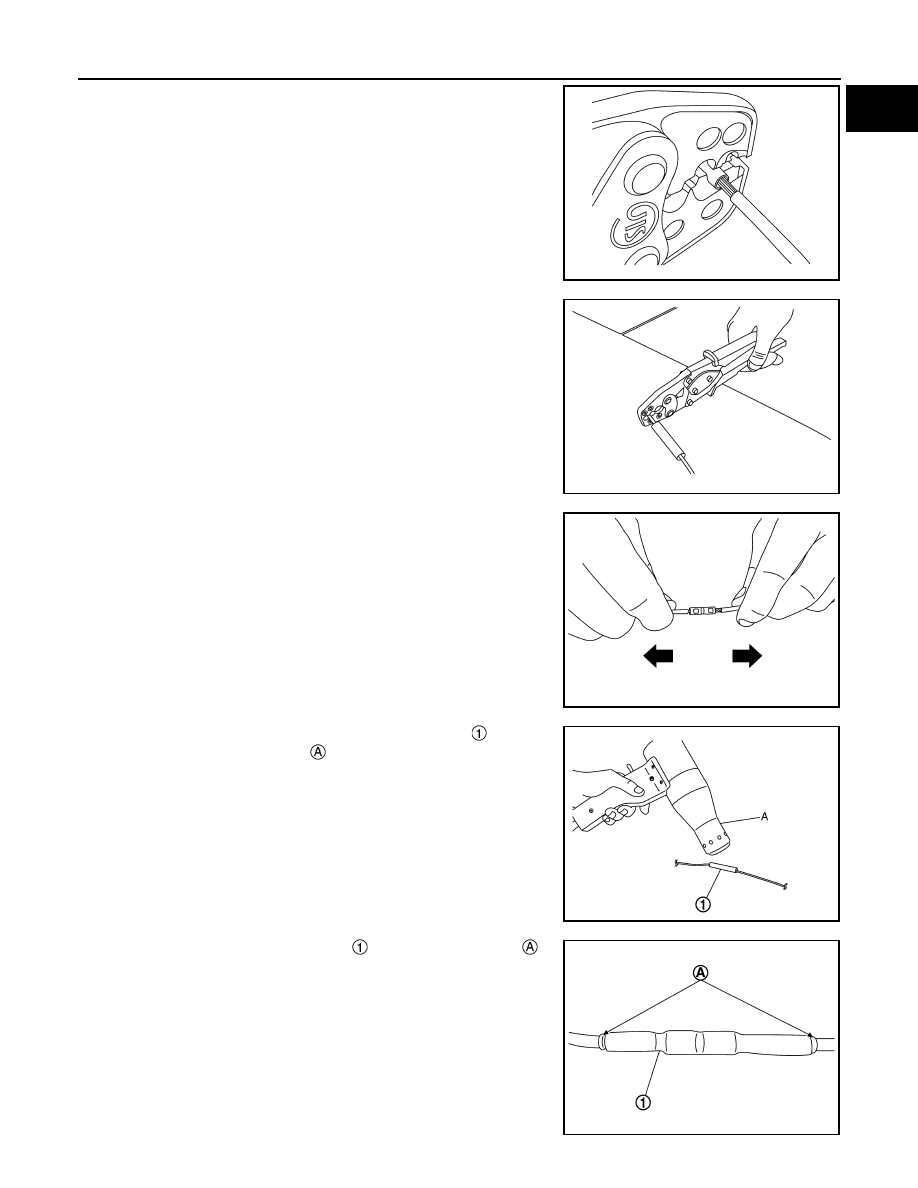Nissan Rogue. Manual - part 723

SERVICE INFORMATION FOR ELECTRICAL INCIDENT
GI-43
< BASIC INSPECTION >
C
D
E
F
G
H
I
J
K
L
M
B
GI
N
O
P
3. Set crimp terminal to the die (tooth) of crimping tool [SST: J-
48817-8].
CAUTION:
Use appropriate die (tooth) of crimping tool [SST: J-48817-
8] according to the crimp terminal size.
4. Apply load until the handle of crimping tool [SST: J-48817-8 is
released.
NOTE:
The handle of the specified crimping tool [SST: J-48817-8] is not
opened until crimping is completed.
5. After crimping both sides, pull wire at both ends to check that
they are not disconnected from crimp terminals.
6. Cover the crimp terminal with heat shrinkable tube and heat
the tube with industrial dryer .
7. After heating heat shrinkable tube , check that adhesive is
squeezed out from both ends of tube to the entire perimeter.
JSAIA2963ZZ
JSAIA2962ZZ
JSAIA2964ZZ
JSAIA2965ZZ
JSAIA2966ZZ